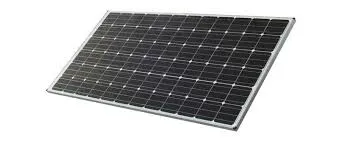Innovative Solar Panels Designed to Mimic the Aesthetic Appeal of Traditional Roof Tiles
Solar Panels Like Roof Tiles A New Era in Sustainable Energy
As the world grapples with the urgent need for sustainable energy solutions, innovative technologies are emerging to make renewable energy more accessible and aesthetically pleasing. One such innovation is the development of solar panels designed to resemble traditional roof tiles. This combination of functionality and visual appeal is revolutionizing the way we think about solar energy integration in residential and commercial buildings.
Aesthetic Integration
One of the primary barriers to solar panel adoption has been their visual impact. Traditional solar panels often clash with the architectural design of a building, leading homeowners to consider them an eyesore. However, solar panels modeled after roof tiles seamlessly blend into the roof structure, enhancing the home's aesthetic. These tiles come in various colors and styles, allowing homeowners to choose options that complement their existing architecture without sacrificing energy efficiency.
Cutting-Edge Technology
Solar roof tiles are more than just a cosmetic solution. They are designed using advanced photovoltaic technology that efficiently converts sunlight into electricity. Made from durable materials such as tempered glass and high-efficiency solar cells, these tiles can generate significant amounts of energy while providing the same protective benefits as traditional roofing materials. This means that homeowners can harness solar energy without compromising on the safety and integrity of their roofs.
Environmental Benefits
solar panels like roof tiles

The shift to solar panels that resemble roof tiles has substantial environmental implications. By encouraging more homeowners to adopt solar energy, we can significantly reduce dependence on fossil fuels, thus mitigating the adverse effects of climate change. Furthermore, these tiles can contribute to lower energy bills and decreased greenhouse gas emissions, promoting a more sustainable lifestyle.
Using solar tiles also reflects a growing trend toward building-integrated photovoltaics (BIPV), where solar energy generation is integrated into the fabric of the building itself. This approach not only optimizes space but also promotes a more eco-friendly and energy-efficient way of living. As technology improves and becomes more affordable, the potential for widespread adoption of solar tiles increases, paving the way for a greener future.
Economic Viability
Initially, the installation of solar roof tiles may seem more expensive compared to traditional solar panels. However, as production scales up and technology advances, prices are expected to decrease. Additionally, the long-term savings on energy bills and possible incentives from governments for using renewable energy sources can make this investment more economically viable.
Many regions offer tax credits, rebates, and financing options to encourage the adoption of solar energy. These financial incentives can significantly offset the costs, making solar tiles a practical choice for many homeowners. Moreover, the increase in property value associated with solar installations makes it an appealing long-term investment.
Conclusion
Solar panels designed to resemble roof tiles represent a significant advancement in the quest for sustainable energy solutions. By harmonizing functionality with aesthetic appeal, these innovative tiles can encourage more homeowners to embrace solar energy, contributing to a cleaner, more sustainable future. As technology continues to evolve, we can expect to see further improvements in efficiency, design, and affordability, solidifying the role of solar energy as a cornerstone of modern architecture. This fusion of energy efficiency and design not only benefits individuals but also helps to foster a collective movement toward a more sustainable and eco-conscious society. Embracing such innovations today will pave the way for a brighter, greener tomorrow.
-
String Solar Inverter: The High-Efficiency Solution for Smart Solar EnergyNewsJul.14,2025
-
Revolutionizing Rooftop Energy with the Power of the Micro Solar InverterNewsJul.14,2025
-
Power Independence with Smart Off Grid Solar Inverter SolutionsNewsJul.14,2025
-
On Grid Solar Inverter: Powering the Future with Smart Grid IntegrationNewsJul.14,2025
-
Monocrystalline Solar Panels: High-Efficiency Power for the Future of Clean EnergyNewsJul.14,2025
-
Bifacial Solar Panel: A Smarter Investment for Next-Generation Energy SystemsNewsJul.14,2025







